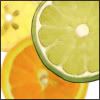Yesterday, we went to Kyoto restaurant, a fine Japanese establishment here in Salt Lake City. It had been a while, and I had initially the intention of trying their udon. It has been years since I've been to Kyoto, and in that time I have appreciatively expanded my taste for Japanese cuisine. But as I looked over the menu - also pondering trying Kyoto's tonkatsu (another favorite dish of mine), I noticed a menu choice I had never heard of before: yose nabe, described as assorted seafood and vegetables cooked in broth. Curious, and far more interested in trying new foods than years ago, I ordered the dish and settled back for a fine dinner and chat with family and friends.
My dish was last to reach the table, and it arrived in a stockpot identical to their udon dish. It's important to make a note here that stockpot meals - at least as they are served at Kyoto - are a different experience than any other meal. A large cast-iron stockpot is set right in front of you, having just come off the heat in the kitchen, and full to near the brim with your meal. This means that over the course of the meal, you sweat. This generally makes you hungrier, or more tired. Now imagine that you're tired already, the person next to you has an udon stockpot, and it's a crowded restaurant on a summer night, and you'll understand what I went through eating this dish. Whew!
Looking into the stockpot, I first only spotted a few components - a simple broth (which radiated the warm smell of seafood), clear rice noodles, scallions, assorted greens, and chicken. Chicken, hmm? I hadn't expected that. I placed a little in my serving dish, and as I was eating it, I spotted sticks hiding below the top level of rice noodles in my stockpot.
Sticks? Slipping my chopsticks in to investigate, I pulled forth a stick, and found skewered fish. In total, there were seven skewers: two tuna, two halibut, two salmon, and one scallop. There were also two shrimp floating in the broth, along with tofu. All of the fish, and the chicken, had been cooked by the heat of the broth itself (with perhaps the exception of the scallops, which seemed they had been possibly precooked slightly beforehand.) The tuna and scallops were a real surprise - tuna is often reserved for customers who specifically order it, and the same is especially true for scallops which are, in Kyoto, only offered on the sushi menu. Also included were a few fish cakes and some small brown mushrooms.
To be sure, the yose nabe was a delightful treat. Meat excluded, the flavor of the soup was akin to a light cabbage broth, with only a hint of seafood taste - even after making a reheated meal of it this afternoon. If you ask me, a seafood stew that can manage to not taste briny or like soggy fishsticks after a day is quite exceptionally executed. Because they were broth cooked, all of the proteins were moist, but retained their firmness, with the realistic exception of the halibut (one of my pieces had fallen off the skewer by the time I pulled it out of the broth). I would argue that the only meat done a disservice by the broth was the tuna; when I retrieved it, it had already gone into the gray stage that tastes more like canned tuna than fresh fish. Most assuredly, though, I will be ordering the yose nabe again; it was both hearty in the stomach and light on the palate.
For more info on Kyoto restaurant in Salt Lake City, UT, click here.
For more info on yose nabe, click here.
Subscribe to:
Post Comments (Atom)

No comments:
Post a Comment